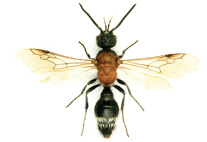Abstract
Pieces of cestode, not indentified further, and 12 species of nematode including 1 new genus, 3 new species and 7 putative new species from the Families Chabertiidae and Heligmonellidae were collected from the digestive tracts of 16 Pogonomys loriae and 19 P. macrurous (Murinae: Hydromyini) from Papua, Indonesia and Papua New Guinea. The chabertiid Cyclodontostomum purvisi and the heligmonellid Odilia mackerrasae have been described previously from endemic murids. Hasanuddinia pogonomyos n. sp. can be distinguished from its congeners by the number of ridges in the synlophe, length of spicules and having a vagina with a dorsal diverticulum. Odilia dividua n. sp. is larger than its congeners, has a longer oesophagus, relatively shorter spicules and larger eggs. Pogonomystrongylus domaensis n. gen., n. sp. differs from all other genera in the Heligmonellidae in the characters of the synlophe, 7–10 ridges oriented sub frontally with a single left ventral ridge hypertrophied. Species richness of the nematode assemblages of P. loriae and P. macrourus are comparable to those of Abeomelomys sevia, Chiruromys vates and Coccymys rummleri when numbers of hosts examined are considered. Species composition was distinctive with 12, including the 7 putative species, of 14 species presently known only from species of Pogonomys. Similarities between the nematode fauna of endemic rodent hosts from Indonesia and Papua New Guinea were noted.

